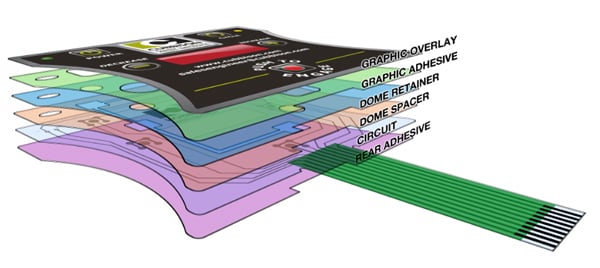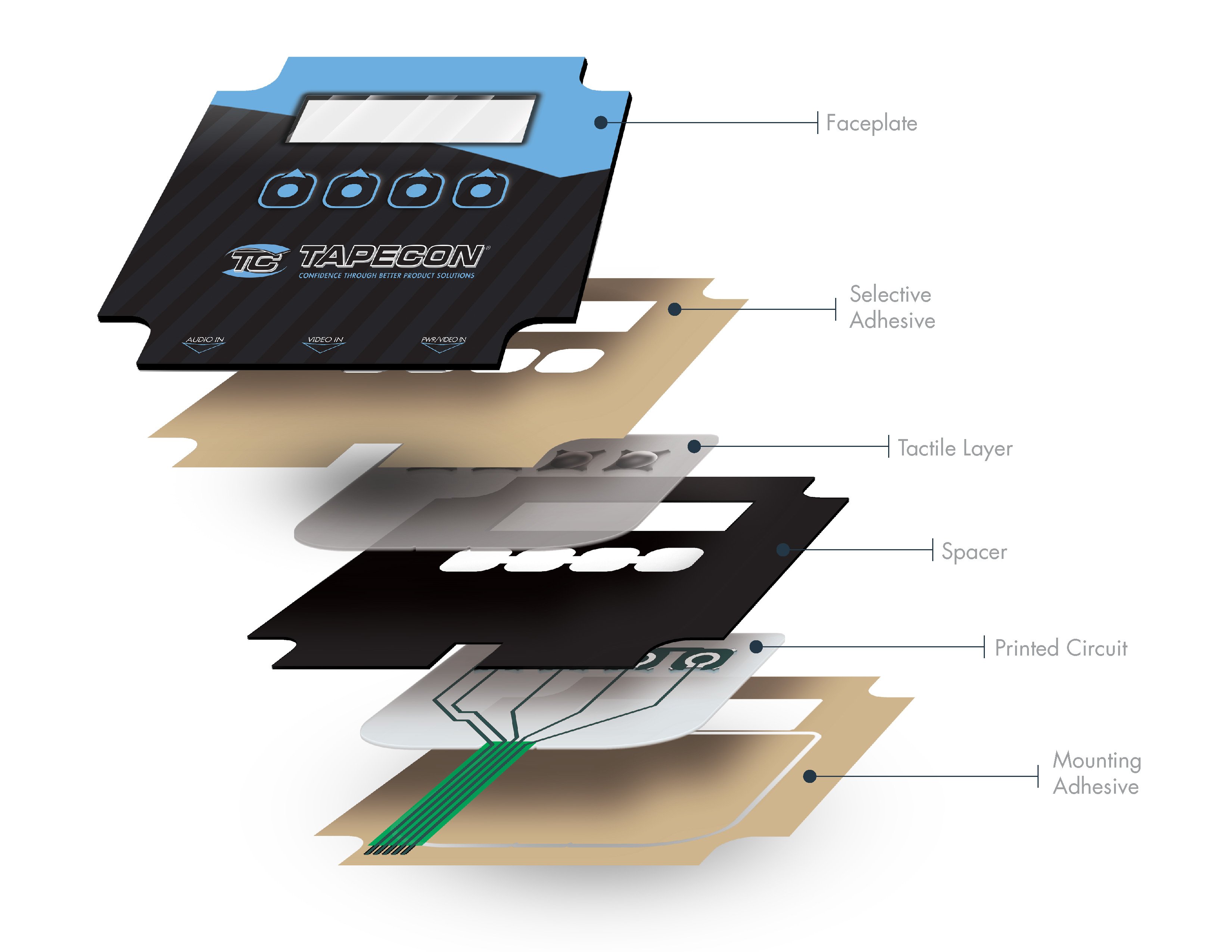How Membrane Switches Contribute to the Success of Connected Appliances
How Membrane Switches Contribute to the Success of Connected Appliances
Blog Article
Membrane Change Modern Technology: The Secret to Dependable and Affordable Interfaces
Membrane button modern technology has become a pivotal component in the design of interface, giving both dependability and cost-effectiveness across a varied series of applications. Its robust building guarantees resistance to ecological challenges, while the flexibility in style permits customized remedies that fulfill particular industry needs. As we check out the diverse advantages of membrane layer switches, their possibility for advancement questions about future applications and developing trends. What does the following chapter hold for this innovation in a significantly electronic landscape?
Understanding Membrane Layer Switch Technology
Membrane button innovation is a widely made use of interface service in numerous electronic gadgets, offering a smooth blend of functionality and layout. This innovation includes multiple layers of materials, usually consisting of a graphic overlay, spacer layer, and a circuit layer. The graphic overlay displays the interface components, while the spacer layer separates the circuit layer from the overlay till a customer turns on a button.
When stress is applied to the overlay, the circuit layer completes the electrical circuit, sending out a signal to the tool. This mechanism allows for various configurations, including responsive comments and backlighting alternatives, improving user interaction. Membrane switches are typically made utilizing long lasting products such as polyester or polycarbonate, ensuring durability and resistance to environmental aspects like moisture and dust.
The adaptability of membrane changes enables their application in diverse markets, including medical gadgets, customer electronic devices, and commercial controls. Their compact layout permits assimilation into space-constrained atmospheres, offering an effective interface without compromising visual appeal. Comprehending the complexities of membrane layer switch technology is crucial for producers and designers seeking to create reliable and reliable human-machine interfaces.
Trick Advantages of Membrane Buttons
While numerous user interface solutions exist, membrane layer changes deal unique advantages that make them a preferred choice in many applications. One of the key advantages is their toughness; membrane buttons are developed to stand up to harsh ecological problems, consisting of wetness, dust, and temperature variations, making sure lasting efficiency. This strength substantially decreases the demand for regular substitutes, therefore decreasing general maintenance expenses.

Furthermore, membrane layer switches are light-weight and portable, making them suitable for applications where space is limited. Their low-profile style adds to a sleek appearance without compromising functionality.
Cost-effectiveness is likewise a remarkable advantage, as the production procedure for membrane switches tends to be less costly compared to standard mechanical switches. This affordability, combined with their dependability and ease of installment, positions membrane layer changes as a sensible remedy for a large range of sectors looking for efficient and efficient interface.
Applications Across Various Industries
Exactly how do membrane buttons adjust to the varied requirements of different sectors? Membrane button innovation is increasingly recognized for its versatility, making it suitable for a wide variety of applications across multiple markets. In the medical field, membrane layer switches are utilized in analysis equipment and patient surveillance devices, where their longevity and convenience of cleaning are important for keeping health standards. The vehicle sector utilizes these buttons in dashboards and control board, using a streamlined aesthetic while guaranteeing user-friendly procedure.
In consumer electronics, membrane buttons provide a small service for remote controls and home appliances, site boosting individual experience through user-friendly style. Additionally, the commercial industry leverages membrane layer switches for equipment control panels, gaining from their resistance to severe settings, such as dampness and dust.
Army and aerospace applications also utilize membrane switches for their dependability and ability to hold up against extreme problems, making sure operational effectiveness in crucial circumstances. The food and beverage market embraces these buttons for automated systems, where sanitation and ease of procedure are vital (membrane switch). Inevitably, membrane layer switches are customized to fulfill the unique demands of each sector, proving their essential role in modern technology interfaces
Style and Modification Alternatives

In the world of membrane switch technology, design and customization options play a crucial role in enhancing capability and customer interaction. These buttons can be tailored to meet certain functional demands and aesthetic preferences, making them flexible components in various applications.
Among the main personalization choices is the design of the switch itself, which can be developed to accommodate special individual interfaces and ergonomic considerations. By changing the shape, dimension, and setup of buttons, makers can create intuitive styles that assist in convenience of usage. Additionally, the unification of different shades and graphic overlays permits branding and boosted visibility, making certain that individuals can quickly determine functions.
In addition, membrane layer switches can be crafted with various responsive responses systems, such as raised switches or distinct clicks, to enhance the customer experience. Different materials can likewise be selected for resilience and environmental resistance, resolving aspects such as wetness, temperature variations, and chemical direct exposure.
Inevitably, the comprehensive layout and personalization choices available in membrane switch innovation encourage organizations to produce customized solutions that not only satisfy functional demands however additionally align with their branding and functional requirements.
Future Fads in Membrane Buttons
As membrane button technology continues to evolve, future patterns are significantly concentrated on improving customer experience and integrating innovative performances. One substantial trend is the assimilation of touch-sensitive and capacitive innovations right into typical membrane buttons. This growth allows for more intuitive interface, providing responsive feedback while keeping a smooth style.
An additional emerging fad is the use of ecologically pleasant products, driven by the expanding need for sustainable manufacturing techniques. Makers are seeking to lower their carbon footprint by utilizing recyclable substrates and low-impact inks, aligning with look at here international sustainability goals.
Additionally, the surge of the Net of Points (IoT) is motivating the incorporation of wise attributes into membrane switches. Improved connection options will certainly enable devices to communicate with each various other, permitting seamless combination right into wider systems.
In addition, Get the facts advancements in printing modern technologies, such as electronic printing, are allowing for better layout adaptability and personalization. This allows suppliers to generate complex styles and vivid shades cost-effectively.

Conclusion
In verdict, membrane layer button innovation stands for an essential advancement in customer interface layout, using considerable advantages in sturdiness, personalization, and cost-effectiveness. As developments continue to emerge, specifically in touch-sensitive interfaces and lasting products, the potential for membrane layer changes to boost individual experience and functionality continues to be encouraging.
Report this page